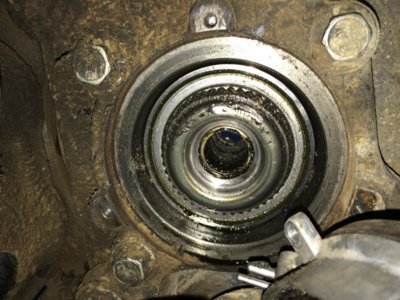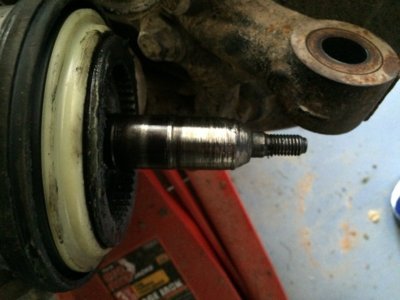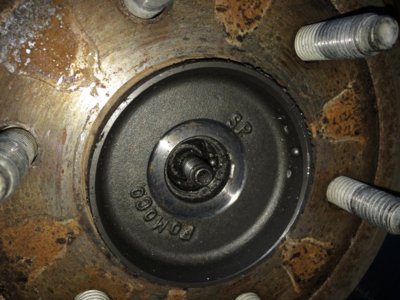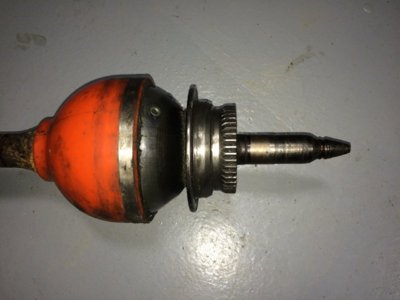tec548
Full Access Member
Guys, I'm hoping someone out there has a solution or has encountered this. I'll start with some back ground for those who don't know me. I have a 13' SCREW with Fox 3.0 front and rear with Deaver's and SVC bump stops. I drive the truck pretty hard off road and use to commute to work on occasion. I have 28k miles on the odo and probably about 8~9k off road. I do not use full throttle in 1st gear and try not to over articulate while under heavy loads... sometimes it's not and option but there you have it.
I first started having problems with the OEM CV's. (This is a common problem for everyone) After just about every event or outing I would break at least one CV shaft. I got tired of this after going through about 4~5 sets. It was getting expensive, so I opted to go with the Ultimate CV. I had heard of some problems with them as well but after speaking with RPG and RCV I was convinced this was the way to go. Since putting them on I have not had a problem with the CV joints or shafts, but I have been having inner hub bearing failures. See pictures attached.
What is happening is the outer roller bearing that captures the nut that holds the CV outer shaft to the hub is failing. When it does the ball bearings come free they grind the shaft end. When this happens it ruins the outer CV end, wheel bearing and sometimes the actuator (IWE). (wheel bearings are not serviceable...) So now this is a $600+ a side fix after every hard run.
How many guys are running the RCV IWE delete? Have you had problems with the differential, drive shaft or TF case? I'm worried about loading these components in drag (2WD) and creating bad wear on ring/pinion and torsion differential. Of course this would be even more expensive to repair later. I believe there would still be a problem with the inner bearing but at least it will not be rotating free in 2WD with the eliminator kit installed.
Anyone that has had this problem please chime in. Especially you guys with the long travel kits... are you having these problems? Why am I? This is not about pointing fingers at anyone or any thing. I want to get a solution to what is becoming a very expensive problem... and of course Ford is of no use.
Joel
I first started having problems with the OEM CV's. (This is a common problem for everyone) After just about every event or outing I would break at least one CV shaft. I got tired of this after going through about 4~5 sets. It was getting expensive, so I opted to go with the Ultimate CV. I had heard of some problems with them as well but after speaking with RPG and RCV I was convinced this was the way to go. Since putting them on I have not had a problem with the CV joints or shafts, but I have been having inner hub bearing failures. See pictures attached.
What is happening is the outer roller bearing that captures the nut that holds the CV outer shaft to the hub is failing. When it does the ball bearings come free they grind the shaft end. When this happens it ruins the outer CV end, wheel bearing and sometimes the actuator (IWE). (wheel bearings are not serviceable...) So now this is a $600+ a side fix after every hard run.
How many guys are running the RCV IWE delete? Have you had problems with the differential, drive shaft or TF case? I'm worried about loading these components in drag (2WD) and creating bad wear on ring/pinion and torsion differential. Of course this would be even more expensive to repair later. I believe there would still be a problem with the inner bearing but at least it will not be rotating free in 2WD with the eliminator kit installed.
Anyone that has had this problem please chime in. Especially you guys with the long travel kits... are you having these problems? Why am I? This is not about pointing fingers at anyone or any thing. I want to get a solution to what is becoming a very expensive problem... and of course Ford is of no use.
Joel





